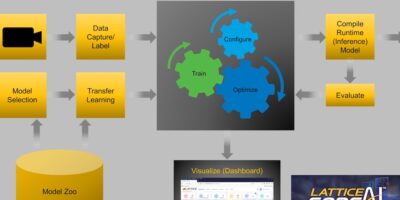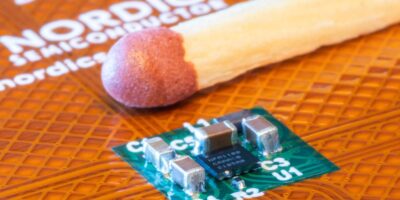Enhancements to the Lattice sensAI solution stack are designed to accelerate artificial intelligence / machine learning (AI/ML) application development on Lattice’s low power FPGAs. The company has added support for the Lattice Propel design environment for embedded processor-based development and the TensorFlow Lite deep-learning framework for on-device inferencing.
Support for the TensorFlow Lite framework reduces power consumption and increases data co-processing performance in AI/ML inferencing applications. TensorFlow Lite runs anywhere from two to 10 times faster on a Lattice FPGA than it does on an Arm Cortex-M4-based microcontroller, reports Lattice.
Another enhancement is the stack’s support for Lattice Propel environment’s GUI and command line tools to create, analyse, compile, and debug both the hardware and software design of an FPGA-based processor system. Even developers unfamiliar with FPGA design can use the tool’s drag and drop interface to create AI/ML applications on low power Lattice FPGAs with support for RISC-V-based co-processing, claims Lattice.
Lattice sensAI Studio is a GUI-based tool for training, validating, and compiling ML models optimised for Lattice FPGAs.
The Lattice sensAI Studio design environment is for end-to-end ML model training, validation, and compilation. Developers can implement sensAI 4.0 using a simple drag and drop interface to build FPGA designs with a RISC-V processor and a convolutional neural network (CNN) acceleration engine to quickly implement ML applications on power-constrained edge devices.
Leveraging advances in ML model compression and pruning, sensAI 4.0 can support image processing at 60 frames per second with QVGA resolution or 30 frames per second with VGA resolution.
Lattice has also responded to the demand in multiple end markets to add support for low power AI/ML inferencing for applications like object detection and classification. AI/ML models can be trained to support applications for a range of devices that require low power operation at the edge, including security and surveillance cameras, industrial robots, and consumer robotics and toys. The sensAI solution stack helps developers rapidly create AI/ML applications that run on flexible, low power Lattice FPGAs, says the company.







